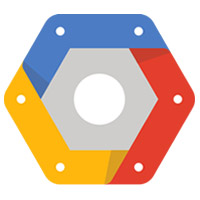
Google, which lags far behind Amazon and Microsoft in the cloud infrastructure services space, last week released a slew of machine learning and analytics products and services.
The Cloud Machine Learning platform provides access through REST APIs to the technologies powering Google Now, Google Photos and voice recognition in Google Search.
The tools are designed to let users build predictive analytics models with their own training data through the open source TensorFlow machine learning library.
Cloud Machine Learning will take care of everything from data ingestion to prediction, Google said.
It is well integrated with other Google Cloud Platform products such as Cloud Dataflow, BigQuery, Cloud Dataproc, Cloud Storage and Cloud Datalab, the company said.
More About the Tools
Google also released a full set of APIs that let apps see, hear and translate.
It added new services and capabilities to Cloud Dataproc, its managed Apache Hadoop and Apache Spark service.
- The company also added the following features to its BigQuery analytics data warehouse:
- Long Term Storage, which automatically cuts the price of storage 50 percent after 90 days;
- Capacitor storage engine, which accelerates many queries by up to 10x;
- Poseidon, a mechanism that improves data ingest and export speed 5x;
- Direct query and import of Apache AVRO files;
- Automatic schema detection of JSON and CSV files; and
- Public Datasets Program, which lets users host, share and analyze public data sets.
Automatic Table Partitions, which lets users partition tables by date and query the date ranges they want, will be added to BigQuery soon, Google said.
All of the features will be sent to users automatically without any upgrades or downtime.
Google is continuing to develop its Tensor machine learning system. TensorFlow Serving can be used with Kubernetes, another Google open source project, to scale and serve machine learning models.
Apache Beam, a new project on the Apache Incubator, lets users define data processing pipelines that can execute in either streaming or batch mode. It consists of a dataflow model, SDKs and runners submitted by Google and partnersCloudera,Talend andData Artisans.
The Google Cloud Vision API has entered beta and is available to anyone.
Getting its Act in Gear
Amazon Web Services had 31 percent of the global cloud infrastructure services market in 2015, according toSynergy Research. Microsoft came in second with 9 percent, followed by IBM with 7 percent, and Google with 4 percent.
“Finally, Google’s taking the enterprise battle for the cloud seriously, and it’s not too late to compete,” said Al Hilwa, a research program director at IDC Seattle.
“AWS and [Microsoft] Azure have been more enterprise focused and have garnered early leadership,” he told the E-Commerce Times, but “the situation is fluid, and it’s definitely early days.”
However, Google’s efforts come five years too late, noted Trip Chowdhry, managing director atGlobal Equities Research.
“Both AWS and Azure are miles ahead, and Google will be in perpetual catchup” mode, he told the E-Commerce Times. “It’s all song and dance, announce and forget, as Google has been doing since 2011.”
The Features That Really Rock
“The machine learning platform and TensorFlow, in particular, have the most potential to bring about significant change in the computing world,” noted Carl Brooks, an analyst at451 Research. “There are extraordinary insights to be gained from playing with data tensors, and Google is making it very easy to do so.”
The major commercial application of this kind of machine learning is advertising, “and Google’s got that locked up,” he told the E-Commerce Times. “But the potential is vast: weather, traffic, populations, scientific exploration — you name it.”
The Public Datasets platform is interesting because “if enough of these open databases eventually are added to the platform, it would be a significant hub of undiscovered information,” Brooks said.
The focus on maturing platform technologies such as Node.js, Kubernetes, machine learning, DataFlow and “many new capabilities being added to support developers who are demanding DevOps capabilities embedded in every feature,” Hilwa said, are the biggest indicators in Google’s announcement of how seriously it is taking the battle for enterprise cloud services.





















































Social Media
See all Social Media